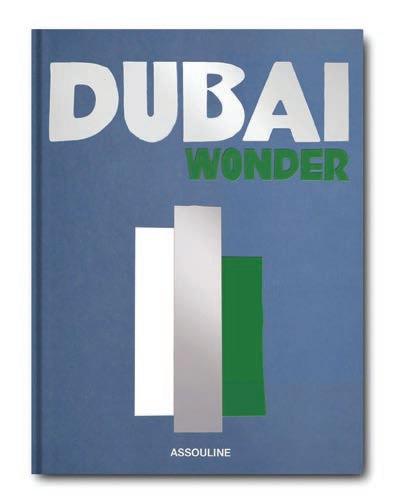
4 minute read
The Making of a Megacity

Myrna Ayad’s latest book, Dubai Wonder, part of Assouline’s Travel Series, pays tribute to one of the world’s most developed and forward-thinking cities while recollecting its history and legacy too
What are your earliest memories of Dubai? Khor Dubai, Al Ghurair Mall, Gerard Café, City 2000, Sindbad, Al Nasr Leisure Land – all probably unknown to some, but they were golden years. Dubai felt like a village, everyone knew everyone, our friends were the children of our parents’ friends, and you could never go somewhere without running into someone you knew. You could buy a lot with a dirham, and you navigated in multicultural circles. Dubai taught me about the world, and really informed my knowledge about visual art from this region. What are some of the biggest highlights of your most recent book, Dubai Wonder? I am extremely proud to see this published and equally proud to see my city take its rightful seat in the Assouline Travel Series. Personally, I much appreciate the mix of the old and new images of Dubai and love the combination of voices speaking about this city. How did you decide on the direction that you’d want to take with the book? I knew from the start that this essay must start with Khor Dubai. It just seems and feels so apt to begin the essay with the very body of water from which the city prospered, and which is, incidentally, where my life with Dubai began: on the banks of this creek. From there, I really just followed geography – I literally trailed Dubai and that helped a lot with the flow. Assouline has previously published books on Miami and Amalfi Coast as part of its Travel Series. How did your approach for Dubai di er from the other books in the collection? I think every Assouline Travel Series writer has their own style and while I’ve read most of the titles in that series, I’d say that we all share a love and passion for the city we write about and are keen on o ering an unseen or otherwise unknown side to it. In my case, this was the first on a Gulf nation and I was excited to delve beyond the glam that Dubai is known for. I really wanted to present My Dubai. As a long-term resident of Dubai, which are the aspects of the city that you hadn’t really noticed until you started researching this book? None really, I’ve lived here for 40 years; the essay is a personal one, so I wrote about people and places that I feel make Dubai the city that it is. The few conversations I had with some protagonists confirmed to me that Dubai is loved and appreciated by many who are rooted here. You also recently launched Sheikh Zayed: An Eternal Legacy with Assouline. Was there any research gathered from that book that made its way into Dubai Wonder? There is a brief reference in my Dubai Wonder essay about the Bani Yas tribe (when discussing Khor Dubai), which is fleshed out a lot more in the Sheikh Zayed book. However, the tone of each book, subject matter, focus, style and so on are completely di erent.
There is a section in the book that deals with notable personalities from Dubai such as Huda Kattan, Khalid Shafar, Dima and Muna Easa Al Gurg, among others. How did you narrow down the list of people you wanted to feature? I presented Assouline with a list of individuals who, in my opinion, make up the fabric of the city and who have positively contributed to and made an impact in their respective sectors. The Assouline team then decided on design and image selection. You’ve explored themes such as F&B, fashion, lifestyle, architecture, art and hospitality in your book. What was your primary objective when determining which aspect of these you’d like to portray in your book? The focal point was to present the city’s best, and so I did. What was the most challenging part of putting together a project like this? The word count. I could write so much more about Dubai. Are there bits that you hadn’t included in it which you wish you had? Most times when I file an essay or article, I always wish I included this or that, and I felt the same with the Dubai Wonder essay, because truthfully, there’s so much to say about this incredible city. If there’s a single message and a takeaway that you’d like readers to take away, what would it be? This is our time. Tell us about your consultancy which focuses on art advisory, cultural strategy and publishing. I focus primarily on cultural strategy and publishing within the context of art and culture from the Arab world, Iran and Turkey. Which are the upcoming projects you are working on? More books, particularly those which tackle regional art and culture. At the moment, I’m working on Al Burda, an initiative under the UAE Ministry of Culture and Youth and which focuses on classical and contemporary Islamic art. Additionally, I advise the Misk Art Institute in Riyadh, which will present its fi h Misk Art Week and second Misk Art Grant in December. I also write a monthly feature for The National titled Remembering the Artist, which tackles the lives and work of (deceased) modernists in the MENASA – this means I am always on the lookout for the children, spouses, relatives, friends or students of modernists. It’s a feature I tremendously enjoy writing – in my own way, I feel like I’m preserving that part of history.










